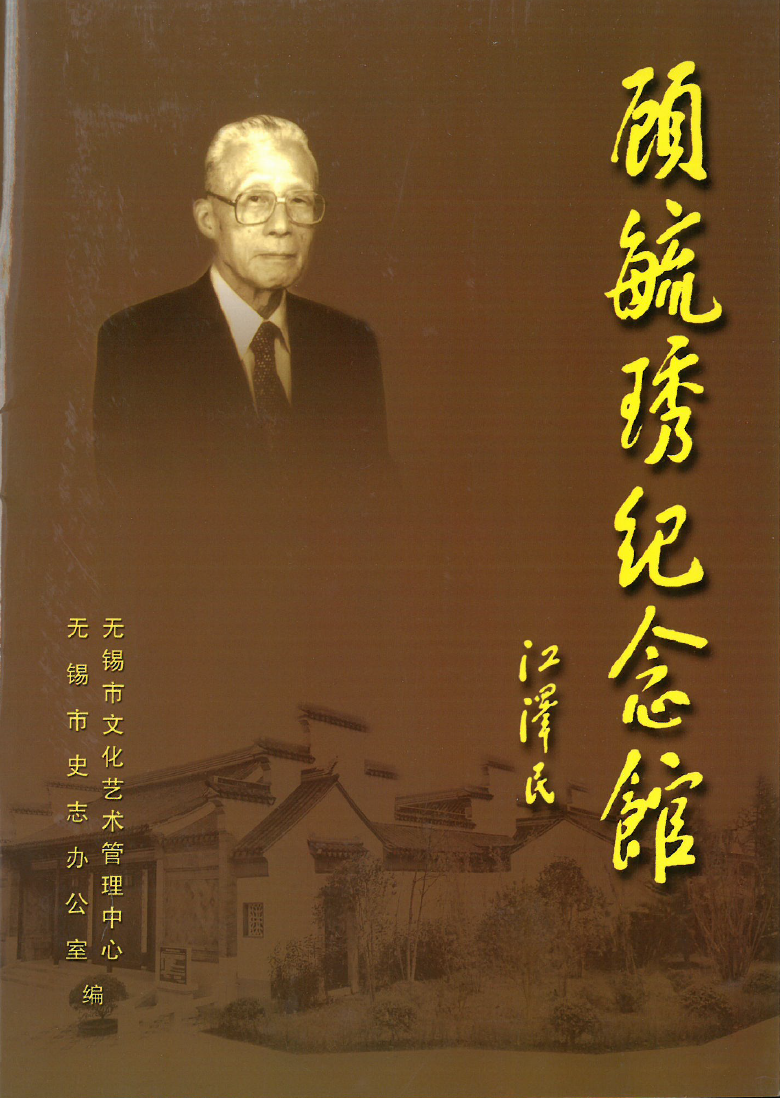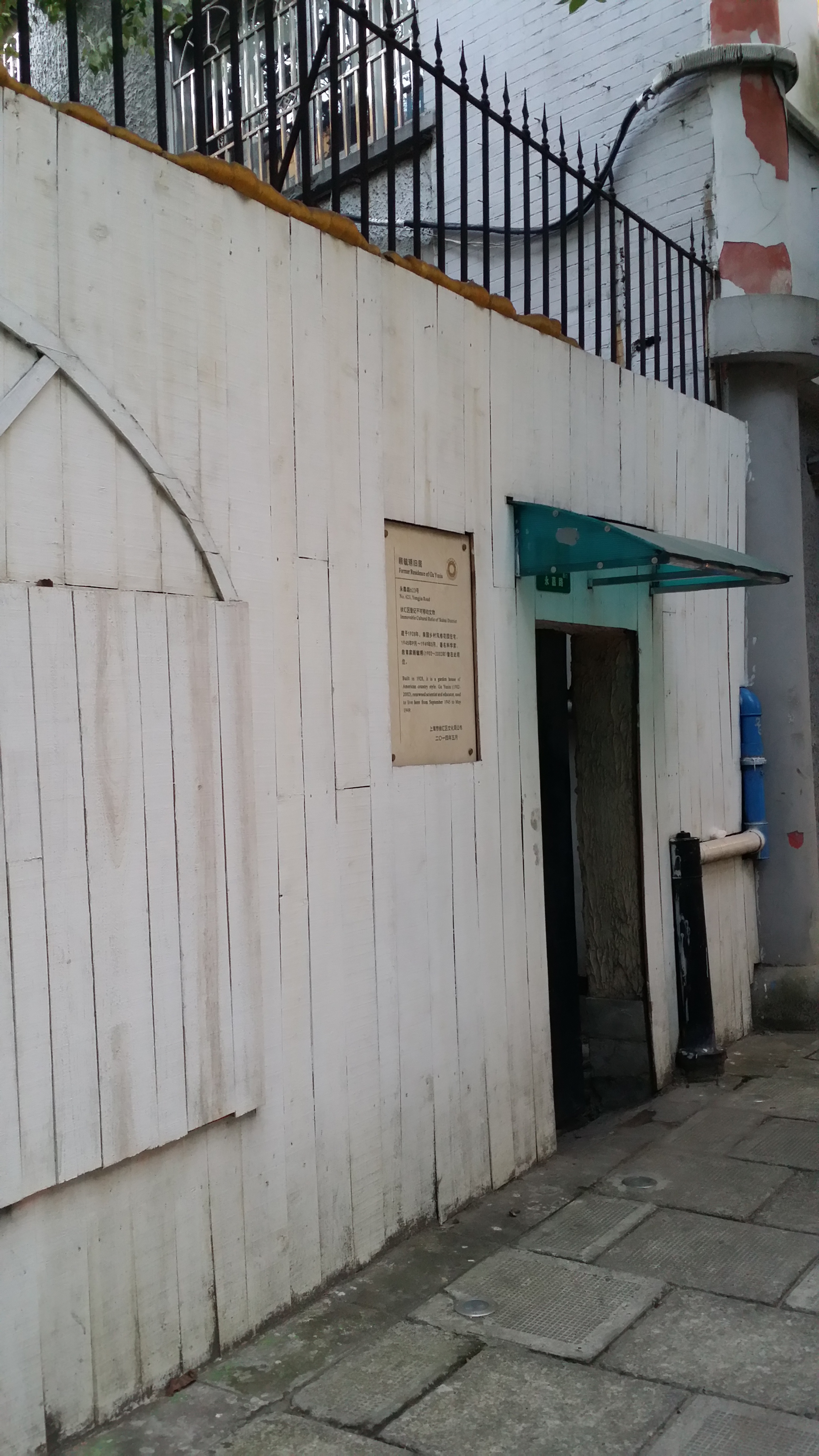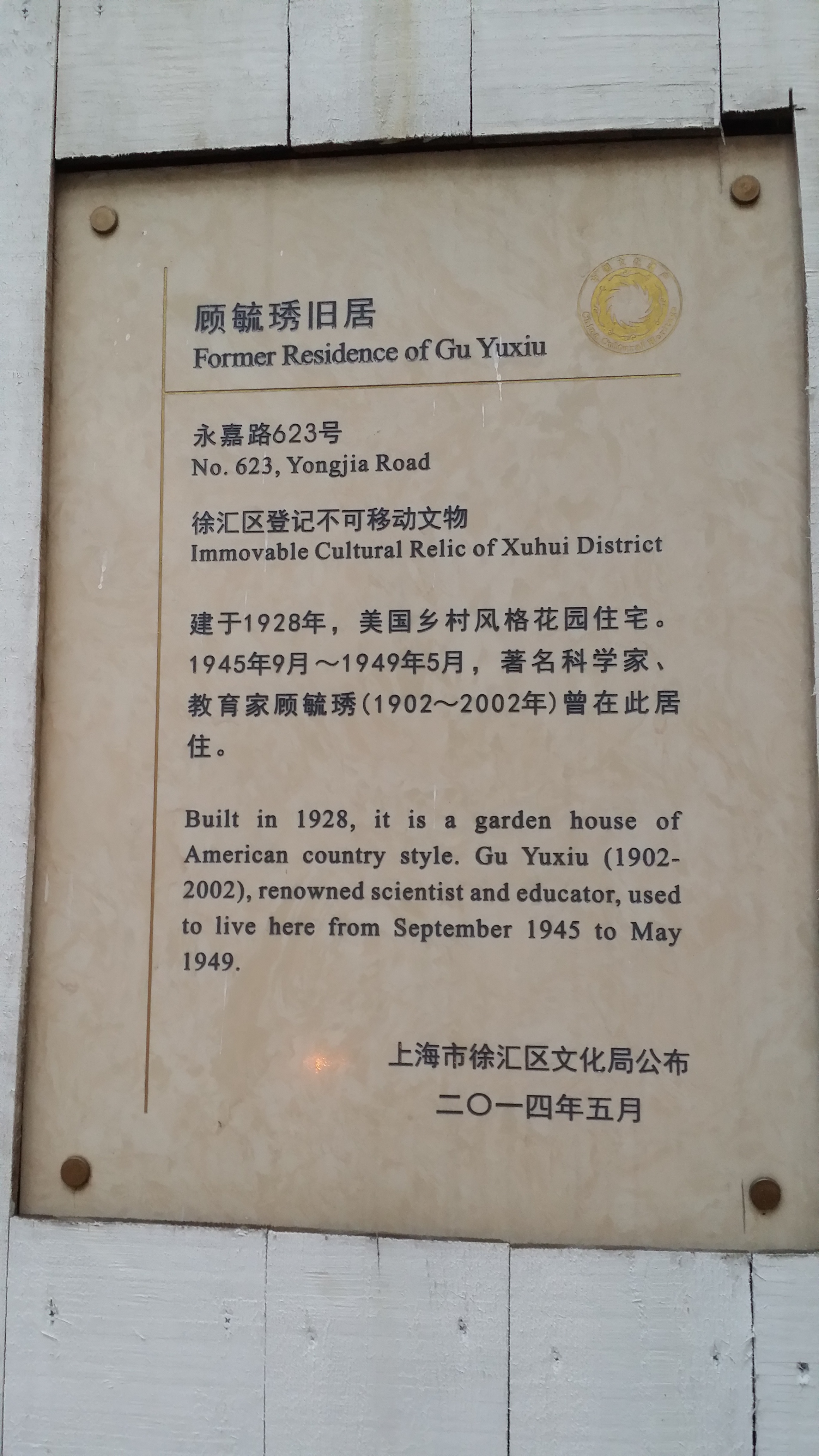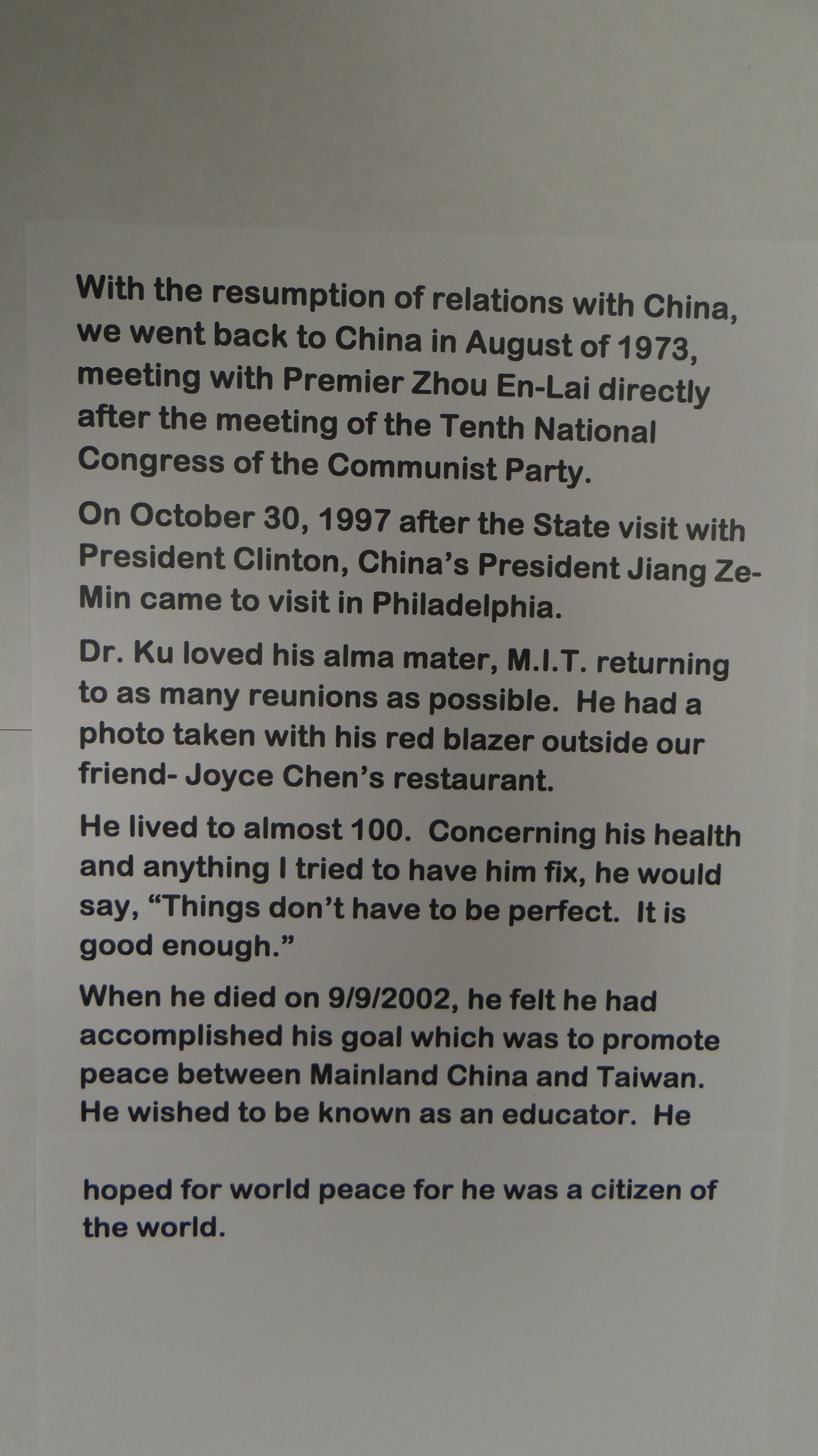Y.H. KU 顧毓琇
POLYMATH
麻省理工大學/Massachusetts Institute of Technology
麻工崇理探真實 MIT esteems reason and seeks facts.
精益求精耐苦辛 Seeking excellence beyond excellence and able to endure the grind.
勉力新知勤講學 Striving for new knowledge and diligent at lectures.
迦蘭河畔桃李新 By the banks of the Charles the peach and plum newly blossom.
Y.H. Ku, 1951
YH Ku, Technique 1925, 85. Courtesy MIT Archives and Special Collections.
Yu hsiu Ku (1902-2002)
Mandarin pinyin Gu Yuxiu (Class of 1925, Electrical Engineering, MS 1926, DSc, 1928) was a native of Wuxi in Jiangsu Province. Born into a family with a scholarly heritage, Ku prepared at the Tsinghua middle school and high school before matriculating at MIT in 1923, entering as a junior. An unusually brilliant student, Ku received his BS in Electrical Engineering with a thesis on “A Study of Core Losses,” and went on to earn two further degrees in record time, with a Master’s thesis on “A Study of Short Circuit Transients in Electrical Machinery” (1926), and a doctoral thesis on “Transient Analysis in AC Machinery” (1928). The first Chinese student to receive a Doctor of Science degree in electrical engineering at MIT, for his thesis Ku developed the variable coordinates that became known as "Ku Variables." Ku's brother Eugene also attended MIT, earning a BS degree in Chemical Engineering Practice in 1929 and a Doctor of Science degree in Chemical Engineering in 1932.
Translation of Principles of Electrical Engineering by Vannevar Bush and W H. Timbie. Courtesy National Taiwan Univesity.
Working for General Electric for a stint after graduation, Ku returned to China in 1929. At the time of the publication of the Chinese Students Directory, Ku was Professor in Charge of the Department of Electrical Engineering at Zhejiang University in Hangzhou, and also an Advisor to the Zhejiang Electrical Bureau. He founded the Journal of Electrical Engineering, serving as chief editor, and contributed much to the promotion of electrical engineering education in China. While at Zhejiang University, he directed a group of seniors in electrical engineering in translating the MIT textbook for EE 600, Principles of Electrical Engineering by Vannevar Bush and W H. Timbie, into Chinese, and had it published by the Shanghai Commercial Press. This was followed by a translation of Prof. A.S. Langsdorf's textbook for EE 601, Principles of Direct-current Machines. Ku was promoted to Dean of Engineering at Central University in 1931, and founded the Chinese Institute of Engineers, acting as vice chair of this body. In 1933, he was appointed Dean of Engineering and Chair of the Electrical Engineering Department at Tsinghua, where he launched the Institutes of Aerospace Engineering and Radio. The following year, Ku became the founding chair of the Chinese Society for Electrical Engineers (now, Chinese Society for Electrical Engineering) in Shanghai.
Ku family in Shanghai 1946. Back row left to right: #1 son Ku Wei-Lien, #2 son Ku Wei-Qing, Ku Yu-hsiu, Mrs. Ku (Wang Wei-Zing). Front row: #3 son Ku Wei-Hua (Walter), #1 daughter (3rd child) Ku Wei-Wen, #4 son Ku Wei-chung (John), #2 daughter Ku Wei-Ming (Anna). Not shown: #5 son Ku Wei-Kuo (Victor). Courtesy Anna Ku Lau.
Ku’s career took a sharp turn after the outbreak of war with Japan in 1937. As he recalled in an interview:
"In 1938, in January, I joined the government. I entered as the vice minister of education in the Kuomintang government, and I served in the ministry for six and a half years. Then I became president of Central University, which I relocated from Nanjing to Chongqing. There I served for one year. Then I went to Shanghai, where I served as commissioner of education for two years. That was 1945 to 47. And from 47 to 49 I served as president of Chengchi (Zhengzhi) University. And then, of course, the Communists had taken over, so I went to Taiwan for half a year and to Hong Kong for half a year.”
Ku was also appointed to the Ministry of National Defense Atomic Energy Research Council.
Having retreated to Taiwan after the Communist Revolution, in 1950 Ku returned once more to MIT, where he served as a Visiting Professor until 1952. In 1951, Ku composed this quatrain to commemorate his second sojourn in Cambridge:
劍橋重遊, 1951/Coming Back to Cambridge, 1951
昔時曾作劍橋客/Of yore I was a sojourner in Cambridge.
五載辛勤願不虛/Five years of hard work I hope were not in vain.
舊地重遊多喜悅/There is much joy in revisiting old haunts.
名師健在著新書/Famous professors are still in good health and writing new books.
During this time at MIT, Ku continued his research on alternating current dynamo and began work on nonlinear control theory, while also consulting for General Electric.
YH Ku, Philadelphia 1953. Courtesy Anna Ku Lau.
Ku then moved to the University of Pennsylvania, where he was a professor of electrical engineering and systems engineering until his retirement in 1972. While abroad, Ku was elected as an Academician of the prestigious Academia Sinica in 1959. He also received numerous honors in the US. In 1964, the U.S. National Committee on Theoretical and Applied Mechanics named an ex officio member of since 1964. In 1972, he was awarded the American Institute of Electrical and Electronics Engineers (IEEE) Lamme Medal, "in recognition of his outstanding contributions to the analysis of the transient behavior of a-c machines and systems," and an Honorary Doctor of Law (LL.D.) Degree from the University of Pennsylvania. In 1999, he was awarded the IEEE Third Millennium Medal and a Golden Jubilee Medal from the IEEE's Circuits and Systems Society "for outstanding achievements and contributions." After his death, the Chinese Society for Electrical Engineers (CSEE) and the IEEE Power & Energy Society (PES) jointly established the IEEE PES CSEE Yu-Hsiu Ku Electrical Engineering Award:
“The award is in memory of Dr Yu-Hsiu KU (1902-2002), who has made great contributions in mathematics, electrical machinery and modern control theory during his longstanding career in the US and China. Prof. Ku was the recipient of the IEEE Lamme Medal (1972) and the IEEE Millennium Medal (1999). He was also the founding member of CSEE.”[5]
In addition to these US honors, Ku also received awards from the PRC and ROC.
While recognized for his achievements in electrical engineering, Ku was also a consummate polymath. As a student at Tsinghua, Ku was active in the May 4th patriotic student movement and the ensuing Literary Renaissance Movement, and helped found the Tsinghua Literary Society with classmates Wen Yiduo and Liang Shiqiu, both leading modern Chinese intellectuals. Helping pioneer the use of vernacular language in literature, Ku began writing prose and short stories, composing 15 pieces in 1922. His first vernacular play, "Lone Swan" (Gu Hong), telling the story of an overseas student who returns to China, was published by the Fiction Monthly (Xiaoshuo yuebao) magazine in March 1923 (republished by the Shanghai Commercial Press in 1925). Ku continued these interests at MIT, writing plays and other literary and musical works, many retellings of classical Chinese historical stories. In collaboration with Liang Shiqiu, Ku helped produce a modern English spoken-drama version of the popular Ming dynasty Chinese theatrical work, "Pi Pa Chi" (The Story of the Lute). Sponsored by the Chinese Students of Greater Boston, the play was performed at the Fine Arts Theater in Boston on March 28 and 29, 1925, with Grace Zia of Wellesley College playing the heroine. As advertised in the Harvard Crimson:
"The Chinese students attending institutions in greater Boston will produce a play entitled ‘Pi Pa Chi’ at the Fine Arts Theatre next Saturday night. The play will be in English. It was written by Kou Ming, a prominent Chinese scholar of the fourteenth century."
According to Liang's memoirs, over 1000 people attended the play, and the "roof was almost shaken off by the stormy applause." This and other Chinese student theatricals inspired the founding of the Chinese Drama Reform Society, of which Ku was a member, and launched the Chinese national theater movement. Ku also continued to be active with the patriotic student movement in the Boston area.
Image from cover of Ku Yu Hsiu's "Jingke" (HYL 5719 3881.42A) courtesy of Harvard University Libraries.
"Ode to Nanking," by YH Ku, from Ten Songs, 1968.
After returning to China, Ku maintained his dual passions for engineering and the arts, helping to found and lead China's National Conservatory, which later became the Central Conservatory of Music. In 1945, he helped found the Shanghai Municipal Experimental Theatre School (now, the Shanghai Theatre Academy). Ku established the frequency of 348 Hz as the standard pitch for the ancient Huang Zhong, or "Yellow Bell," the instrument that sets the fundamental pitch for all tones in the classical Chinese music system. A prolific writer in numerous genres, including fiction, drama, poetry and history, Ku published approximately 20 volumes of literary works, and also composed music and song lyrics.
Ku’s autobiography, One Family-Two Worlds (Philadelphia, Pa.; 22G Academy House, 1420 Locust St., Philadelphia 19102: Y.H. Ku) was published in 1982 under his literary name, Gu Yiqiao (顧一樵). Ku later became very interested in Buddhism and also published scholarly works on this subject, including a history of Chan (Zen) Buddhism.
Having once taught Jiang Zemin and also served a stint on Taiwan's National Assembly, Ku became a recognized figure in restoring friendly relations between the two sides. Ku’s collected scientific papers and collected literary works have been published in both China and Taiwan. According to WorldCat, Ku’s publications include 178 works in 569 publications in Chinese and English.
Ku died in 2002, having lived a rich life of 100 years. As the Dean of University of Pennsylvania's School of Engineering and Applied Science said at the time of Ku’s death:
"Dr. Ku was one of the last polymaths. He made technical contributions in areas as diverse as electrical machinery, Lyapunov methods and Volterra equations for nonlinear mechanics and nonlinear control, and boundary-layer heat transfer. Additionally, Dr. Ku....served as president of China's National Music Conservatory....We should be proud that he is a part of Penn Engineering's history.”
In 2004, Ku Yuxiu’s old home in Jiangsu Province was converted into a museum to commemorate his life and career, and in 2014 his old residence in Shanghai was also designated a historical property. In 2012, China's Central Conservatory of Music played tribute to Ku with a conference and performance of some of his musical works.
Ku's daughter, Anna, shares the following recollections of her parents:
Courtesy Anna Ku Lau.
YH Ku and ZZ Li (CLass of 1922). Pictured from left to right: YH Ku, Mrs. Li (nee SJ Fong), Mrs. Ku (nee Wei-Zing Wang) and ZZ Li, Ku home, ca. 1977. The Ku family home became a gathering place for many MIT alumni and friends. Courtesy Lillian Li.
Sources: Bridge, 163-165, Chinese Students Directory, Technique 1925, 85, Gu, Yiqiao. One Family-Two Worlds. Philadelphia, Pa.] (22G Academy House, 1420 Locust St., Philadelphia 19102: Y.H. Ku, 1982. www.guyuxiu.cn/english/Pennsylvania.htm">http://www.guyuxiu.cn/english/Pennsylvania.htm">www.guyuxiu.cn/english/Pennsylvania.htm">http://www.guyuxiu.cn/english/Pennsylvania.htm
www.ieee.org/documents/lamme_rl.pdf">http://www.ieee.org/documents/lamme_rl.pdf">www.ieee.org/documents/lamme_rl.pdf">http://www.ieee.org/documents/lamme_rl.pdfwww.upenn.edu/almanac/v46/n25/honors.html">http://www.upenn.edu/almanac/v46/n25/honors.html">www.upenn.edu/almanac/v46/n25/honors.html">http://www.upenn.edu/almanac/v46/n25/honors.html
www.upenn.edu/almanac/v46/n25/honors.html">http://www.upenn.edu/almanac/v46/n25/honors.html">www.upenn.edu/almanac/v46/n25/honors.html">http://www.upenn.edu/almanac/v46/n25/honors.html
www.ieee-pes.org/yu-hsiu-ku-electrical-engineering-award">http://www.ieee-pes.org/yu-hsiu-ku-electrical-engineering-award">www.ieee-pes.org/yu-hsiu-ku-electrical-engineering-award">http://www.ieee-pes.org/yu-hsiu-ku-electrical-engineering-award
Bridge, 163-64, www.guyuxiu.cn/english/Newsflash.htm">http://www.guyuxiu.cn/english/Newsflash.htm
Gu, Yiqiao. One Family-Two Worlds. Philadelphia, Pa.] (22G Academy House, 1420 Locust St., Philadelphia 19102: Y.H. Ku, 1982, Bridge, 163-64.
Gu, Yiqiao. One Family-Two Worlds, Weili Ye, 2001, 205.
The Crimson, March 26, 1925, www.thecrimson.com/article/1925/3/26/chinese-players-to-perform-pthe-chi...">http://www.thecrimson.com/article/1925/3/26/chinese-players-to-perform-p...">www.thecrimson.com/article/1925/3/26/chinese-players-to-perform-pthe-chi...">http://www.thecrimson.com/article/1925/3/26/chinese-players-to-perform-p...
In Ye 2001, 205.
Ye 2001, 205-206.
http://usa.chinadaily.com.cn/culture/2012-12/21/content_16039963.htm">http://usa.chinadaily.com.cn/culture/2012-12/21/content_16039963.htm
http://en.sta.edu.cn/">http://en.sta.edu.cn/
www.guyuxiu.cn/english/Prof.htm">http://www.guyuxiu.cn/english/Prof.htm
www.guyuxiu.cn/english.asp">http://www.guyuxiu.cn/english.asp
Bridge,www.upenn.edu/almanac/v49/n05/deaths.html">http://www.upenn.edu/almanac/v49/n05/deaths.html">www.upenn.edu/almanac/v49/n05/deaths.html">http://www.upenn.edu/almanac/v49/n05/deaths.html,www.guyuxiu.cn/sp.asp">http://www.guyuxiu.cn/sp.asp">www.guyuxiu.cn/sp.asp">http://www.guyuxiu.cn/sp.asp,https://en.wikipedia.org/wiki/Y._H._Ku
www.worldcat.org/wcidentities/lccn-n83205881">http://www.worldcat.org/wcidentities/lccn-n83205881
www.upenn.edu/almanac/v49/n05/deaths.html">http://www.upenn.edu/almanac/v49/n05/deaths.html
www.guyuxiu.cn/jng.asp">http://www.guyuxiu.cn/jng.asp, usa.chinadaily.com.cn/culture/2012-12/21/content_16039963.htm, Yiqiao Gu, Jiao she shi ge yi qian shou/Y.H. Ku, 1000 Regular Poems (Shih and Ko), Yangmingshan, Taiwan: Huagang chubanbu, 1973, YH Ku, from Ten Songs, 1968.
In 1951, Ku composed this poem to commemorate the death of Prof. Dugald Caleb Jackson (1865-1951), Head of MIT's Department of Electrical Engineering, 1907 to 1935.
悼傑克孫教授/Mourning Professor Jackson
追念名師傑克孫/Recollecting famed teacher, Jackson.
三千弟子出其門/3000 disciples have come forth from his gate.
高齡八十人爭仰/Living to a venerable age of 80s, everyone vies to pay respects.
禮拜追思聽頌言/Listening to eulogies at the memorial service.











